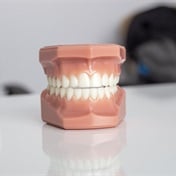We are told that dairy forms part of a healthy, balanced diet, but there are so many options available that it becomes difficult to make a choice.
Contradictory information on which of these dairy products are best for our health has created a lot of confusion among shoppers.
What’s the nutritional value of dairy?
Dairy plays a significant role in protecting us against heart disease, high blood pressure and diabetes. Dairy is a unique package of essential nutrients such as high-quality protein, carbohydrates, vitamins A, B12, and B2, calcium, phosphorus, magnesium, potassium and zinc. It also has some unique nutritional properties: the live cultures in fermented dairy like yoghurt and amazi are important for good gut health, and the bioactive peptides in milk may explain its protective effect on high blood pressure.
How are full-cream and low-fat dairy products made?
In South Africa, milk is classified according to its fat content as presented in the table below. At present, high-fat or medium-fat milk is not available on the South African market, only in yoghurt and cottage cheese. Full-cream milk typically contains 3.4% fat. At the dairy processor, the bulk of the full-cream milk is spun in a large centrifuge. This process separates the heavy fat globules from the lighter watery part of milk, producing fat-free or low-fat milk.

Is the fat in dairy bad for our health?
Accounting for almost half the total energy (kilojoules) in full cream milk, milk fat is a complex fat made of over 400 different types of fatty acids. About 25% of milk fat is made up of oleic acid, a monounsaturated fat, and about two-thirds of the fat is saturated, containing mostly palmitic acid, stearic acid, and myristic acid. Other fatty acids include butyric acid, sphingolipids, and conjugated linoleic acids (CLAs).
Interestingly, considerable research has failed to find an association between the saturated fat in dairy products and risk of heart disease and stroke – with some studies concluding a neutral and, in some cases, beneficial effect on our health.
Which is better for our health: full-cream or low-fat dairy?
Two common misperceptions about dairy are that full-cream milk is very high in fat and that sugar is added to low-fat and fat-free milk. This is, however, not the case. Compared to other foods (eg. boerewors with 32% fat, hamburger with 30% fat, and a bar of chocolate with 20–30% fat), full-cream milk contains much less fat (3.4%) than commonly believed.
In low-fat and fat-free milk, only fat has been removed along with some vitamin A, a fat-soluble vitamin. Nutritionally, low-fat and fat-free milk contain comparable amounts of protein, carbohydrate and calcium, and is a good choice for people who are overweight, diabetics, or have high blood pressure.
The carbohydrates indicated on the label refers to the lactose (milk sugar) in milk. It is important for us to know and appreciate that the dairy industry is very tightly regulated. For example, dairy farmers are not allowed to add anything to milk, not even sugar. Further to this, dairy processors may not use the milk of cow’s that are being treated with antibiotics.
What about the processing of milk?
Regardless whether full-cream or low-fat, all milk in South Africa is homogenized and pasteurized.
To improve the quality of the milk for the consumer, a process called homogenization forces milk through a thin nozzle at high pressure to break up the fat globules into smaller, evenly distributed sizes. This prevents a creamy layer forming on top of the milk, something consumers don't like. Pasteurisation is a form of heat treatment that kills potentially harmful bacteria.
So, which do I choose?
The choice between full-cream, low-fat and fat-free dairy is an individual thing and a matter of taste. If dairy contributes little to your diet, it probably doesn't matter whether you opt for full-cream or fat-free. Should you want to reduce your calorie intake, the low-fat or fat-free versions are more suitable.
Irrespective of your choice, make dairy a regular feature in your diet. Dairy is a nutrient-rich food that can compensate for nutrient-poor foods and snacks. If milk displaces sugary drinks, and low-fat yoghurt replaces high-sugar snacks such as chocolate it remains a good choice irrespective of fat content.
Aim for two to three servings of dairy per week. One serving of dairy is equivalent to 1 glass of milk (250ml), 200ml of amazi, two small tubs of yoghurt (200ml), 1/3 cup of grated cheese (40g) or 275g of cottage cheese.




 Publications
Publications
 Partners
Partners
















